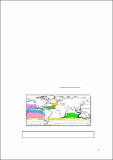Por favor, use este identificador para citar o enlazar a este item:
http://hdl.handle.net/10261/95112COMPARTIR / EXPORTAR:
 SHARE
BASE SHARE
BASE
|
|
| Visualizar otros formatos: MARC | Dublin Core | RDF | ORE | MODS | METS | DIDL | DATACITE | |

| Campo DC | Valor | Lengua/Idioma |
|---|---|---|
| dc.contributor.author | Bode, Antonio | - |
| dc.contributor.author | Acuña Fernández, José Luis | - |
| dc.contributor.author | Bueno, J. | - |
| dc.contributor.author | Fernández de Puelles, María Luz | - |
| dc.contributor.author | González-Gordillo, J. Ignacio | - |
| dc.contributor.author | Hernández León, Santiago | - |
| dc.contributor.author | Irigoien, Xabier | - |
| dc.contributor.author | Mompeán, Carmen | - |
| dc.contributor.author | Olivar, M. Pilar | - |
| dc.date.issued | 2012-9 | - |
| dc.identifier.citation | ICES Annual Science Conference (2012) | - |
| dc.identifier.uri | http://hdl.handle.net/10261/95112 | - |
| dc.description | 2012 Annual Science Conference ICES, 17-21 September 2012, Bergen, Norway.-- 9 pages, 5 figures, 4 tables | - |
| dc.description.abstract | The distribution of epipelagic plankton biomass by size-fractions was studied during Malaspina-2010 expedition across the Indian, Pacific and Atlantic oceans. The objective was to characterize plankton biomass structure at large spatial scales in poorly explored areas of the ocean. Samples from 95 stations, representative of 3 of major ocean biomes and 12 ecological provinces, were fractionated in 5 size-classes (40 to 5000 μm) and biomass determined as dry weight. Mean plankton biomass was similar for all oceans and major biomes but varied significantly between provinces, being particularly high in the N Pacific Equatorial Countercurrent and in the Caribbean provinces. The differences were mainly due to increases in medium-sized plankton, while for most provinces the biomass was uniformly distributed across logarithmic size-classes. Total and size-class plankton biomass was negatively and non-linearly correlated with the mixing layer depth and with the depth of the chlorophyll maximum across provinces. In contrast only the biomass of the smaller plankton was positively and linearly correlated with sea surface temperature, while the biomass of other size-classes was positively affected by the thermal stratification gradient in the upper layer. The obtained relationships will improve our ability to monitor and model the ocean response to global change | - |
| dc.rights | openAccess | - |
| dc.title | Mapping plankton biomass in the deep-ocean: an ecological provinces approach | - |
| dc.type | comunicación de congreso | - |
| dc.date.updated | 2014-04-07T12:44:55Z | - |
| dc.description.version | Peer Reviewed | - |
| dc.language.rfc3066 | eng | - |
| dc.type.coar | http://purl.org/coar/resource_type/c_5794 | es_ES |
| item.openairetype | comunicación de congreso | - |
| item.grantfulltext | open | - |
| item.cerifentitytype | Publications | - |
| item.openairecristype | http://purl.org/coar/resource_type/c_18cf | - |
| item.fulltext | With Fulltext | - |
| Aparece en las colecciones: | (ICM) Comunicaciones congresos (IEO) Comunicaciones congresos | |
Ficheros en este ítem:
| Fichero | Descripción | Tamaño | Formato | |
|---|---|---|---|---|
| Bode_et_al_2012.pdf | 679,6 kB | Adobe PDF |  Visualizar/Abrir |
CORE Recommender
NOTA: Los ítems de Digital.CSIC están protegidos por copyright, con todos los derechos reservados, a menos que se indique lo contrario.
